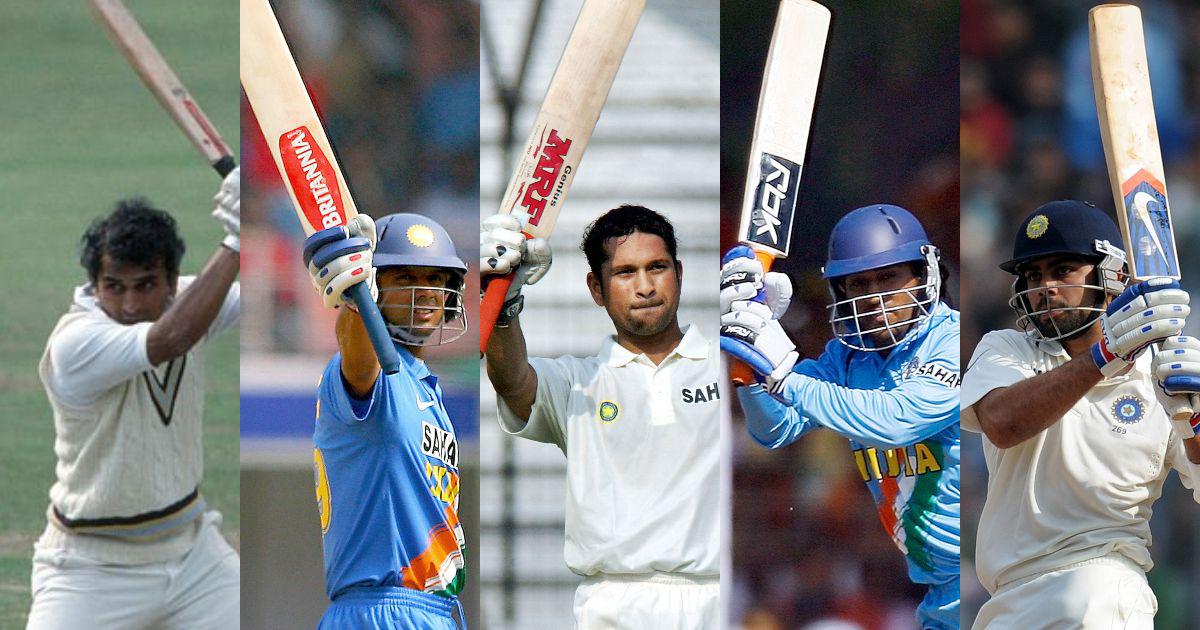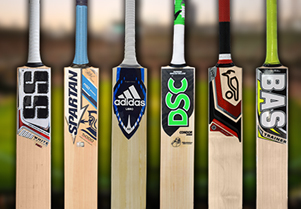The Evolution of the Cricket Bat: From 1700 to Present Day
Cricket is played and watched by millions of people nationwide, from schoolyards to stadiums. The basis of the game is the cricket bat, an essential piece of equipment that has undergone significant improvement over time.
The development of the cricket bat in India from its simple beginnings in the 1700s to the cutting-edge, high-tech variants of today will be thoroughly examined in this essay. We’ll discuss how technology has changed cricket bat design and production, how Indian craftsmanship has impacted the industry, and how bats are currently made in India.
We will know more about how the cricket bat has changed over time and the factors that have influenced these changes. We’ll look at how advancements in technology, materials, and design have had an impact on the business, as well as how Indian artisans have significantly influenced these changes.
Whether you’re a die-hard cricket fan or just curious about the history of sporting equipment, this book will give you fascinating insights about the evolution of the cricket bat in India, from its early roots to its current stature as a symbol of national pride and enthusiasm.

The history of cricket bats starts in the 1700s.
Since it was created in the 1700s, the cricket bat has undergone significant change. Players would initially strike the ball with a variety of tools, including their hands or even sticks. But as the sport developed in popularity and complexity, it became obvious that a certain piece of gear was required for hitting the ball. Willow was the main material used to manufacture the earliest cricket bats.
- These early bats were fairly simple in design, with a straight handle and a flat blade. The flat blade made precise ball striking difficult, and the straight handle provided little leverage for power. As the sport continued to develop, so did the design of the cricket bat. With the addition of a curved shape to the blade in the late 1700s, the blade’s shape started to change.
- It was now simpler for players to strike the ball with accuracy and force thanks to the new design. In order to give the player more leverage, the bat’s handle was also modified. The materials used to make the bat also changed, in addition to the design changes. The most common type of wood used to make cricket bats was still willow, but ash, hickory, and even bamboo were also employed.
- After the first stage of evolution, wood production became more standardized. Peeled plant remnants were used to create blank bats. To produce a more uniform wall thickness, the trunks were split longitudinally, the bark was stripped off, and the surfaces were flattened.
The Role of Indian Craftsmanship
It cannot be stressed enough how integral Indian craftsmanship is to the development and tradition of cricket bats. Indian craftsmen have been handcrafting cricket bats for generations, utilizing age-old methods and premium materials. The development of cricket bat designs has therefore been impacted by a lengthy history of craftsmanship.
Indian bat manufacturers are recognized for their painstaking attention to detail and capacity to modify bats to suit the particular requirements of distinct players. Indian-made bats are known for being among the best in the world as a result of this level of personalization. Traditionally, picking the wood, shaping the blade, and attaching the handle are the procedures for manufacturing a cricket bat by hand. Each action calls for agility, mastery, and stamina.
One of the elements that contributes to the high price of cricket bats made in India is the high quality of the wood used in their construction. English willow, which is native to the UK but is cultivated in India under excellent conditions and produces wood that is especially suited to the specifications of cricket bats, is the material of choice for Indian bat manufacturers. For its longevity, strength, and lightness, English willow is highly valued.
In addition to employing high-quality wood, Indian bat producers are recognized for their ability to create bats with unique shapes and specs. They take the time to get to know each player’s preferences and requirements, collaborating closely with them to create bats that are tailored to each player’s specific needs.
But modern manufacturing techniques aren’t the only ones used in the cricket bat industry to innovate. The manufacture of bats in India is now more precise and consistent than ever before thanks to the adoption of cutting-edge manufacturing methods and computer-aided design (CAD) software. By fusing conventional and modern techniques, a new generation of cricket bats has been developed that offers the best of both worlds.
The Impact of Technology
The evolution of cricket bat designs has been significantly influenced by technological breakthroughs. Cricket bats have undergone significant technological advancements in terms of raw materials and manufacturing processes, going from simple wooden blades to the complex equipment used by players today.
The materials used to produce cricket bats are one of the key areas where technology has changed things. In the beginning of cricket, willow or ash wood was used to make bats. But because of technological advancements, other materials, including carbon fiber, fiberglass, and even kevlar, may now be used to make cricket bats. These materials offer a variety of benefits, such as increased toughness, power, and durability.
Technology has also had an impact on the procedures used to create cricket bats. Many manufacturers now create bat designs that are more precise and consistent than ever thanks to CAD software. Bats can be produced to exact specifications, ensuring that they are tailored to the individual needs of each player.
The development of new bat designs has been aided by technology. For instance, the development of the “swinging bat” in the 1960s, which allowed players to strike the ball more fiercely and precisely, significantly altered the game. Manufacturers are continually producing new bat designs that are geared for specific playing circumstances and distinct player styles.
Technology has not only affected cricket bat design and production, but it has also changed how the game is played. For instance, developments like Hawk-Eye and Snicko have facilitated more precise decision-making, and progress in video analysis has aided players in developing their performance and technique.

The Indian Cricket Bat Industry’s Future
The future of cricket bats in India appears promising as the sport continues to develop and gain in popularity. The cricket bat industry has a lot of room for innovation and growth, given recent technological developments and a renewed emphasis on sustainability.
Cricket bats’ sustainability is one issue that will be addressed in the future. As worries about deforestation and climate change continue to grow, there is an increasing interest in developing more sustainable materials for cricket bats. Manufacturers are investigating bamboo and recyclable materials as alternatives to conventional wood. In addition to being more eco-friendly, these materials provide a number of advantages, such as improved toughness and durability.
There is a growing focus on using technology to produce cricket bats that are more precise and consistent as a result of the introduction of new materials and manufacturing processes. Manufacturers are experimenting with new techniques to design and produce bats that are suited to the specific requirements of each player, including 3D printing and computer-aided design (CAD) software.
Additionally, India will soon see greater cricket bat personalization. As players’ playing skills become more specialized and individual, cricket bats that are specifically made to meet each player’s distinct needs will become more and more popular. Manufacturers are already experimenting with this trend by offering custom bats made to fit each player’s weight, size, and preferred playing style.
And last, it’s expected that the Indian cricket equipment industry will keep growing in the future. As the sport becomes more well-liked on a national and international level, there will be a rise in demand for high-end cricket bats and other equipment. Manufacturers now have the opportunity to start developing new cricket bat designs and broadening the range of what is practical.
In conclusion, it seems that cricket bats have a bright future in India. With an emphasis on sustainability, technology, personalization, and growth, the cricket bat industry is ideally positioned for ongoing innovation and success. The cricket bat will change to accommodate players’ and spectators’ shifting demands and preferences as the game of cricket develops and expands.
The State of Cricket Bats Currently

The state of cricket bats in India is currently one of innovation and growth, with a rich history of craftsmanship and design driving the industry forward.
Manufacturers of cricket bats in India are among the best in the world, with a long history of craftsmanship and attention to detail. India is currently one of the world’s top producers of cricket bats, sending top-notch bats to other nations. Manufacturers continuously push the limits of cricket bat design and construction in this fiercely competitive industry.
One of the key changes in the Indian cricket bat industry is the focus on customization. Cricket bats that are specifically created to meet each player’s needs are becoming more and more popular as players’ playing styles become more specialized and personalized. Manufacturers offer customized bats that are tailored to the weight, size, and aesthetic preferences of certain players in response to this pattern.
A significant emphasis is being placed on integrating technology to create cricket bats that are more precise and consistent, in addition to customizing them. Manufacturers are experimenting with novel methods, like 3D printing and computer-aided design (CAD) software, to create bats that are tailored to the individual needs of each player. Due to manufacturers continuously pushing the limits of cricket bat design and manufacturing, the industry has entered a new era of innovation.
The emphasis on sustainability is another significant trend in the Indian cricket bat industry. Growing interest is being shown in creating more environmentally friendly materials for cricket bats as a result of worries about deforestation and climate change. Manufacturers are looking into alternatives to traditional wood, such as bamboo and recycled materials. In addition to being more eco-friendly, these materials have a number of advantages, such as improved toughness and durability.
The state of cricket bats in India is one of innovation and growth. With a rich history of craftsmanship and design, and a focus on customization, technology, and sustainability, the Indian cricket bat industry is well positioned for continued success in the years to come.
Conclusion
In conclusion, the evolution of the cricket bat in India over the past 300 years has been a fascinating journey. From humble beginnings as a wooden club to the high-tech, modern designs of today, the cricket bat has undergone significant changes driven by technology, materials, and craftsmanship.
Throughout this article, we have explored the role of Indian craftsmen in shaping the industry, the impact of technology on cricket bat design and construction, and the current state of cricket bats in India. We have seen how the use of new materials such as willow and carbon fiber, and innovative designs have transformed the industry and pushed the boundaries of what’s possible on the cricket field.
Future analysis reveals that India’s cricket bat evolution is far from complete. Every day, new materials and technologies are developed, and the industry is still propelled by innovation and a love of the sport. Cricket fans and players alike are living exciting times, and we can’t wait to see where the next 300 years of evolution take us.
Overall, the evolution of the cricket bat is not just a story of changing technology, materials, and design. It’s also a story of a sport that has captured the hearts and minds of millions of people in India and around the world. The cricket bat is a symbol of national pride and passion, and it will continue to play a central role in the sport for years to come.
